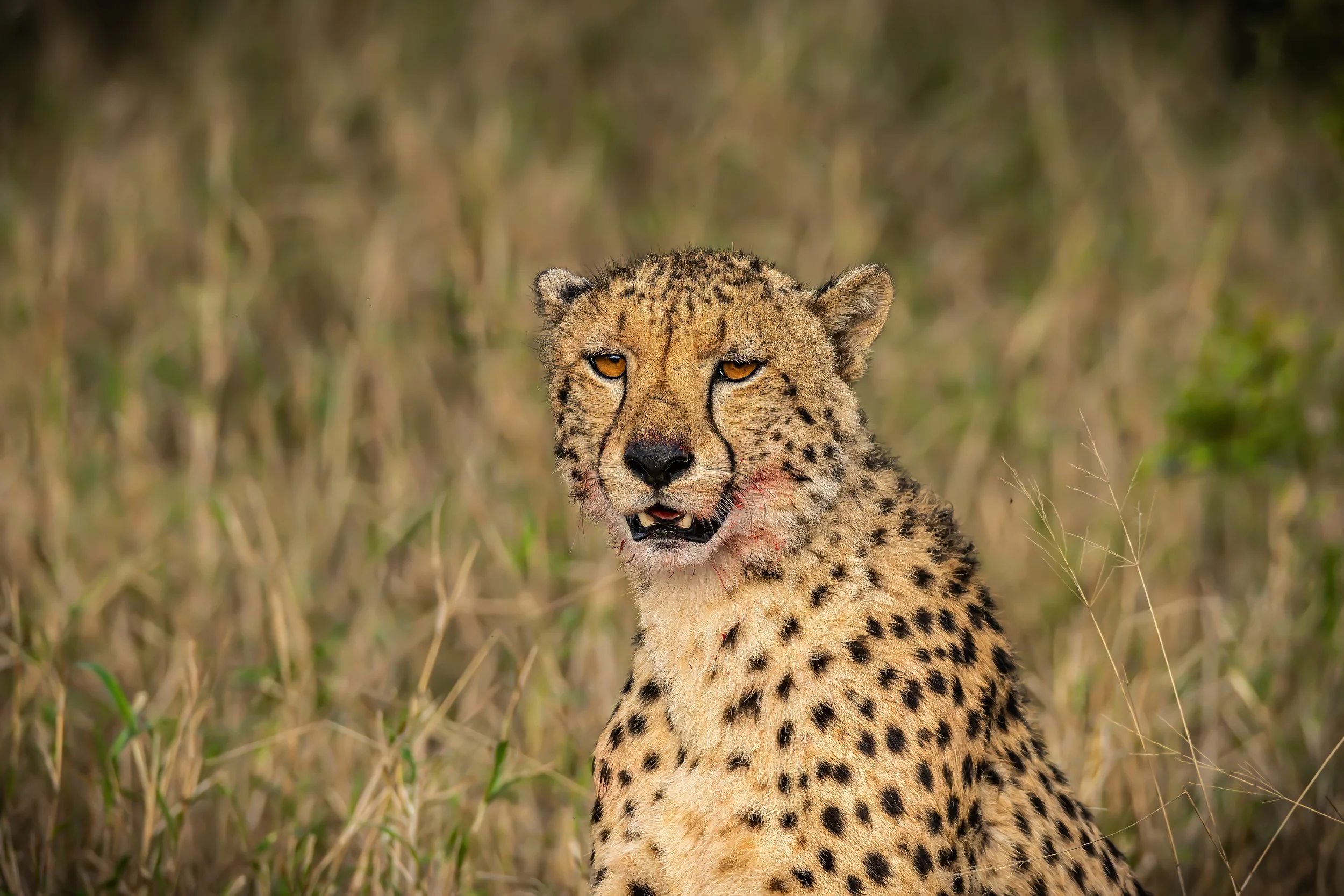Cheetahs at Manyoni Private Game Reserve
Seeing a cheetah in the wild is an unforgettable experience. The sheer speed, elegance, and poise of these big cats are unmatched, making them one of the most captivating creatures on Earth. I had the privilege of witnessing my first wild cheetahs while volunteering with Wildlife ACT at Manyoni Private Game Reserve in South Africa. Here, cheetahs are more than just iconic predators—they represent a conservation success story.
Reintroducing Cheetahs to Manyoni
Manyoni Private Game Reserve has played a pivotal role in reintroducing cheetahs to the wild. This effort was part of an ambitious conservation initiative aimed at restoring the ecological balance and increasing the range of this vulnerable species. Over the years, Manyoni’s dedicated team has carefully managed the reintroduction of cheetahs, ensuring that they have the space and protection needed to thrive in their natural habitat.
Cheetahs were once widespread across Africa, but habitat loss, human-wildlife conflict, and poaching have drastically reduced their numbers. By reintroducing cheetahs into reserves like Manyoni, conservationists are giving these incredible animals a second chance. Watching them roam the reserve, knowing their history and the challenges they face, made each encounter even more meaningful.
My Experience Monitoring Cheetahs
During my time at Manyoni with Wildlife ACT, cheetahs were one of the three main species we monitored daily. Using telemetry equipment, we tracked their movements, recorded their behavior, and ensured their safety within the reserve. One memorable morning, we picked up a strong signal and followed it to find a coalition of cheetahs lounging in the early light, their lean bodies perfectly camouflaged against the golden savanna.
Capturing these moments with my camera was a dream come true. Cheetahs, with their sleek build and distinct black “tear marks” that help reduce sun glare, are a photographer’s ideal subject. Each photograph felt like a testament to their resilience and a reminder of the ongoing conservation work that allows them to roam freely.
The Life of a Cheetah
Cheetahs are renowned for their incredible speed. They can accelerate from 0 to 60 mph in just three seconds, making them the fastest land animals. However, this speed comes at a cost. Their slender bodies lack the strength to protect their kills from larger predators, which means cheetahs often eat quickly or risk losing their meal.
Unlike other big cats, cheetahs do not roar; instead, they communicate with a variety of sounds, including purrs, chirps, and hisses. They are diurnal hunters, preferring to chase down prey in the early morning or late afternoon when temperatures are cooler.
Cheetah Conservation Challenges
Cheetahs face numerous challenges in the wild. Their population has dwindled due to habitat loss, conflicts with humans, and declining prey. Today, fewer than 7,000 cheetahs remain in the wild, with their range spanning just 10% of its historic spread.
Conservation organizations like Wildlife ACT and the teams at Manyoni are working tirelessly to monitor, protect, and advocate for cheetahs. By keeping detailed records of their movements and behaviors, reserves can create better strategies to protect these cats from poaching and other threats.
A Moment to Remember
One of the most striking experiences I had while monitoring cheetahs at Manyoni was when we received an alert about two male cheetahs that needed updated ID kits. These cheetahs had been spotted in an area recently affected by a controlled burn conducted by the Manyoni Conservation team. When we arrived, the scene was surreal. The ground was a stark black canvas from the burn, punctuated by fresh green shoots pushing their way through the scorched earth. The two cheetahs rested under a dense canopy of surviving bushes, their bodies camouflaged by the shadows and remnants of the fire.
Despite my best efforts, the setting didn’t allow me to capture the ID shots we needed. However, what I did manage to photograph was unforgettable: the two cheetahs lying serenely amidst the contrast of blackened ground and new growth, embodying resilience and the circle of life. The photo captured more than just the animals; it told a story of renewal and survival, of nature’s ability to rebound and thrive even after facing fire.
It was a moment that perfectly encapsulated the balance of fragility and strength in the natural world, reminding me why documenting these scenes and supporting conservation efforts is so important.


